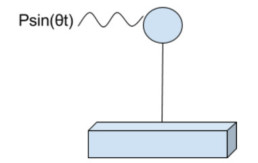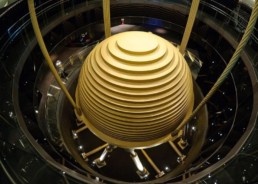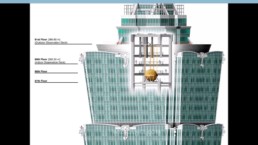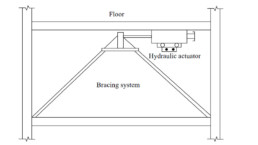Let us first understand, what is a structure? : A structure (building, bridges & towers) is a system which carries and/or transmits loads which are static like the gravity loads or dynamic like the loads due to earthquakes, wind or tsunamis. Just like humans reacting to any external force/ pressure exerted onto them, a structure also reacts by deforming under static loads and vibrating under dynamic loads and this peculiar behavior of the structure is known as structural response.
A typical structure is designed based on material science (which helps to determine limit states, global and local plasticity of materials like steel or concrete) , mathematics (helps to calculate displacement, acceleration & velocity of the system) and mechanics (helps to ascertain equilibrium and stability ). The results from amalgamation of these fields helps the designers to ensure structural safety and serviceability under expected loads.
Limitations of traditional design : The traditional approach has chained the structures to an inherently small material damping, fixed ductility and total dependence on stiffness to resist loads. The ever-changing environmental excitations has placed questions on resilience of modern structures and there will be a time when conventionally designed structures will no longer be able to provide life safety.
What is a smart structure and why it overcomes the limitation of traditional design? : Smart structures on the other-hand exhibit smart materials and adaptive systems that can automatically adjust themselves to improbable environmental changes. A smart structure has the ability to sense any change in the environment or system, diagnose any problem at critical locations, store and process measured data, and command appropriate action to improve system performance and to preserve structural integrity, safety, and serviceability.
Relationship between structural response and devices that make the structure “smart” (MATH ALERT) :
We’ll try to over-simplify our structure by assuming it to be an inverted pendulum (single degree of freedom system) which is acted upon by force P due to earthquake which is sinusoidal in nature and where the excitation frequency θ is function of time t.
Now don’t be scared by this mathematical equation , it is just to give you an idea about how even a known scalable applied force could provide us a response which looks a bit complicated, although to mathematicians and structural engineers this is a trivial problem.
In real world, the earthquake forces are arbitrary and identifying the behavior of the structure under those circumstances becomes arduous. Nevertheless, a bunch of these complicated equations provide the basis for following important conclusions about how structural seismic response of a structure could be reduced. The response is reduced by –
- Reducing the magnitude of earthquake excitation,
- Increasing the damping ratio ζ (which means that increasing the measure of how oscillations in a system decay after a disturbance),
- Enlarging the difference between natural frequency ωn of the system and the excitation frequency θ.
These conclusions are realized by smart structures through the following mechanisms:
• Base-isolation systems that cut off the energy transmission of earthquake ground motions to the structure.
• Control devices or systems that apply a control force to serve as an extra damping mechanism by means of devices such as mass dampers/drivers, tendons, or bracings.
• Control devices or systems that utilize the energy absorption capability of materials by viscosity and/or nonlinear characteristics, such as yielding.
• Control devices or systems that distance the natural period of the structure from the predominant frequency of earthquake ground motions.
What kind of smart devices/techniques are available to keep external vibrations in check? :
Base Isolation : A building mounted on a material with low lateral stiffness, such as rubber which behaves as a flexible base. During the earthquake, the flexible base is able to filter out high frequencies from the ground motion and prevents the building from being damaged or collapsed.Isolation components, usually called isolators or bearings, are generally classified as one of two major types: elastomeric- and sliding-type bearings.
Passive Control : these are mechanical devices which require no power to control external excitations. Eg : Tuned Mass Dampers (TMD) , Tuned Liquid Dampers (TLD) , Friction Devices, Metalic Devices , Visco – Elastic Dampers, Viscous – Fluid Dampers.
(Tuned Mass Damper at Taipei 101 Financial Centre, image source : slate.com)
Reference video about Tuned Mass Damper (link below) :
Active Control : these are devices which need external power to generate control force. This innovative technique uses special devices, such as electro hydraulic actuators, to generate the required control force against earthquake loading by feeding back the measured structural response. This control force can serve as extra damping, thus reducing structural vibration under traffic, wind, and earthquake excitations.
Eg : Active Mass Damper Systems, Active Tendon System, Active Brace System, Pulse Generation System.
(Active bracing system with hydraulic actuator, image source : Franklin Y. Cheng, Hongping Jiang, Kangyu Lou. Smart structures)
Reference video about Active control system :
Semi – Active Control : They are intelligent dampers as their adaptive system gathers information about the excitation and structural response and then adjusts the damper behavior on the basis of this information to enhance its performance. A semi-active damper system consists of sensors, a control computer, a control actuator, and a passive damping device. The sensors measure the excitation and/or structural response.
The control computer processes the measurement and generates a control signal for the actuator. Then the actuator adjusts behavior of the passive device rather than directly applying force to the structure. Eg : Semi Active Mass Tuned Dampers, Semi Active Vibration Absorbers (SAVA), Semi – Active Stiffness Control Devices (SAVS) etc.
A comparison between passive and semi-active is shown in the video(link below) :
Should these systems be installed in all structures? :
No. Since their application is very expensive therefore they are currently used in structures with following conditions :
- Structures under unusual excitations, such as extreme winds or strong earthquakes.
- Structures with critical functions and high safety requirements, such as hospitals, fire stations, and power plants.
- Structures requiring serviceability considerations, such as towers, tall buildings, long-span roofs or bridges, and other flexible structures. Under large environmental excitation, excessive structural vibrations could affect occupant comfort or structural safety.
References :
- Franklin Y. Cheng, Hongping Jiang, Kangyu Lou. Smart structures, innovative systems for seismic response control. Pg 1-37
- Applied Technology Council (ATC), Proceedings of ATC-17-1 Seminar on Seismic Isolation: Passive Energy Dissipation and Active Control, San Francisco, California, 1993.
- Arima, F. et al. A study on buildings with large damping using viscous damping walls, in Proceedings of the Ninth World Conference on Earthquake Engineering, International Association for Earthquake Engineering, Tokyo, 1988, p. 821.
- Vasant Matsagar. IAStructE conference on planning and design of “Tall Buildings including earthquake and wind effects”. 2016





